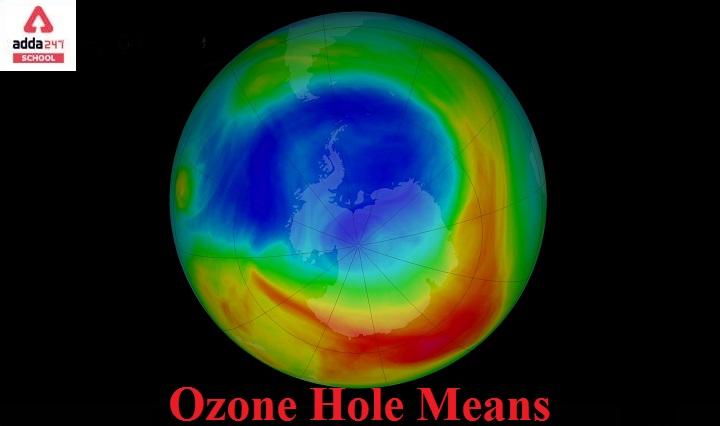Table of Contents
Ozone Hole
ozone hole means the depletion of the protective ozone layer in the upper atmosphere (stratosphere) over Earth’s polar regions. CFC gas is major reason of Ozone Hole Creation
Read About: Global Warming
“Ozone Hole” Means
The ozone layer is a region of the Earth’s stratosphere that absorbs the majority of ultraviolet radiation from the Sun. It has a high ozone (O3) concentration in comparison to other parts of the atmosphere, but it is still small in comparison to other gases in the stratosphere. The ozone layer has a concentration of fewer than 10 parts per million, while the average ozone concentration in the entire atmosphere is around 0.3 parts per million. Although its thickness varies seasonally and geographically, the ozone layer is primarily found in the lower stratosphere, between 15 and 35 kilometres above Earth.
Read About: Biodiversity
Ozone Holes Facts
Chemicals released by industry, primarily chlorofluorocarbons, were found to be depleting the ozone layer in 1976, according to atmospheric research (CFCs). Concerns that increased UV radiation from ozone depletion posed a threat to life on Earth, including increased skin cancer in humans and other environmental issues, led to chemical bans, and the latest evidence suggests that ozone depletion has slowed or stopped. The International Day for the Preservation of the Ozone Layer was established by the United Nations General Assembly on September 16th.
Two interconnected occurrences have been noticed since the late 1970s: a constant drop of roughly 4% in total ozone in Earth’s atmosphere (the ozone layer), and a substantially bigger springtime decrease in stratospheric ozone around Earth’s polar regions.The ozone hole is the name given to the latter phenomenon. In addition to these stratospheric events, there are springtime polar tropospheric ozone depletion events.
Read About: Biosphere Reserve
How is Ozone Hole Created?
Chemicals, particularly manufactured halocarbon refrigerants, solvents, propellants, and foam-blowing agents (CFCs, HCFCs, halons), are the primary causes of ozone depletion and the ozone hole. After being emitted from the surface, these compounds are carried into the stratosphere by turbulent mixing, which mixes the molecules far faster than they can settle. The presence of chlorine-containing source gases is the principal cause of ozone depletion.
The majority of the ozone that is destroyed happens in the lower stratosphere, as opposed to the considerably lesser ozone depletion that occurs in the high stratosphere due to homogenous gas-phase interactions.
Read More About: Biotic and Abiotic Components
Ozone Hole: Consequences
Because the ozone layer absorbs UVB ultraviolet light from the sun, Ozone depletion increases surface UVB levels, which is harmful, including a rise in skin cancer. The Montreal Protocol was created to address this issue. Despite the fact that declines in stratospheric ozone are well linked to CFCs and increases in surface UVB, there is no direct observational evidence linking ozone depletion to an increased risk of skin cancer and eye impairment in humans. This is partially due to the fact that UVA, which has been linked to some forms of skin cancer, is not absorbed by ozone, and partly due to the fact that tracking statistics for lifestyle changes over time is practically impossible. Depletion of ozone may also affect wind patterns.



 NEET PG 2025 Notification Out at natboar...
NEET PG 2025 Notification Out at natboar...
 Minimum Marks Required in NEET for MBBS ...
Minimum Marks Required in NEET for MBBS ...
 Navigating the Jump from Class 10 to Cla...
Navigating the Jump from Class 10 to Cla...










